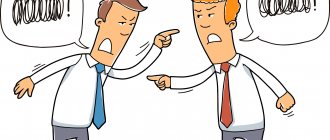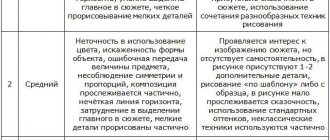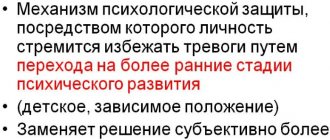Rational thinking is a standard psychological term that reflects the most abstract level of human thinking. It is otherwise called logical thinking. It doesn’t make much difference which concept to use, since they mean the same thing.
This method of intellectual activity is used to establish logical connections and sequences. Allows you to perceive the world from the point of view of reason, be critical of everything, find weak points in arguments, and approach problems in a non-standard way. This is only part of what this type of mental activity is responsible for.
Rational thinking develops much later than others. And not automatically, but under the influence of systematic activity. The more focused it is, the better the results. The development of intellectual abilities is possible at any age. As for the type under consideration, it develops most effectively in mature years. Starting from about 14-15 years old, you can actively engage in training. Previously, you only need to lay down basic skills and techniques.
What does rational thinking consist of, how to check the degree of its development in yourself, how to develop strong skills to think logically?
Rational thinking
Many people often act on emotions without thinking through the consequences or their own decisions. This happens due to too “hot blood” or banal reluctance. If this is definitely not about you, then we can say that you are a rational person. This does not imply methodical action or other special factors. Rational thinking is just the ability to think about your decisions and act according to logic.
Zeno's paradoxes
The world cannot be explained by existence, since in existence there is neither movement nor multiplicity, which seem to exist in the world. Parmenides' student, Zeno, decided to show that there is no plurality and movement in the world, and with the help of paradoxes, he tried to think things within the framework of Paramenides' concept.
The flying arrow paradox. A flying arrow flies - therefore it moves. On the other hand, a flying arrow exists - therefore, it is located in some place in space. Having determined this place, we get that the arrow is motionless. (Illustration is a derivative that is not zero.)
The paradox of the infinitely small and the infinitely large. If multiplicity exists, then each thing is infinitely small and infinitely large at the same time. Indeed, in this case, any thing can be divided an infinite number of times, and an infinitely large number of infinitesimal parts will be obtained. Since a thing consists of infinitely small parts, then it itself is infinitely small, and since a thing consists of an infinite number of parts, then it is infinitely large. Thus, any thing is infinitely small and infinitely large at the same time.
Modern science has to push these contradictions under the carpet and handle them with iron fists. (Illustration - integral, divergent harmonic series.)
Zeno discovered the paradoxes that result from allowing movement and multiplicity into the temple of strict thought. But contradictions are inherent in existence itself.
The Structure of Rational Thinking
There are three main forms of rational thinking:
- concept;
- judgment;
- inference.
We can imagine a concept as the name of an object or action. We simply point out the subject of discussion itself, presenting it to the audience. For example, we say “bird”, “flight”. Next we present a judgment. We link objects together. In other words, we explain the meaning of the previously mentioned concepts. The result is the statement: “The bird flies.”
As a result, we are faced with conclusions. Here judgments are combined, and new conclusions are drawn based on their analysis. We reasoned that the bird flies and we know that it has wings. We also know that humans do not have wings. This means that our conclusion is that the bird flies thanks to its wings.
These forms form the basis of rational thinking. For a clearer picture, it is necessary to look at this from a slightly different angle.
Creation. Intuition
The human psyche acts as a constant process of developing new forms of sensory, rational and eidetic knowledge. The psyche as an activity to develop something new is spiritual creativity. The English scientist G. Wallace identified four stages of the processes of spiritual creativity: preparation, maturation, insight and verification. The central moment of creativity is insight, an intuitive grasp of the new.
Intuition is direct, unconsciously acquired knowledge. Intuitive knowledge can be sensory (contemplative), rational or eidetic. In the first case, intuition acts as an instant feeling. In the second case, we are dealing with intellectual intuition, the discussion of which occupied a prominent place in the philosophy of Descartes, Spinoza, and Leibniz. In the third case we are talking about eidetic intuition.
In philosophical movements, which are usually classified under the rubric of intuitionism (Bergson, Lossky), intuition is more a given than comprehension of the unknown. According to Lossky, the world is an organic whole, therefore there is always epistemological coordination between subject and object, even when there is no cognition. At the same time, when characterizing intuition as an act of cognition, intuitionists are not inclined to structure this act and most often emphasize the integrity of intuition. In fact, we are talking about eidetic intuition in its undivided form.
Since the ways in which intuition arises are not realized, there is a temptation to see the secret of intuition either in the depths of the unconscious (S. Freud), or, conversely, in the “superconsciousness”, under which K.S. Stanislavsky understood the highest stage of the creative process, different from both the unconscious and the conscious. But creativity and intuition are determined not only by the unconscious, but also by the conscious. This calls into question the attribution of intuition exclusively to the realm of the unconscious and irrational (i.e., inaccessible to reason).
The rapid development of the entire human sphere poses the task of teaching creativity. The science of studying creative activity and teaching methods is called heuristics. Socratic conversations, exchange of opinions, discussions, analysis of problem situations - all this contributes to the development of the spiritual and creative abilities of the individual. It is interesting to note that these abilities can be enhanced in the process of using a computer: when the construction of a system of plausible models makes it possible to more effectively search for new knowledge.
Intuition and creativity do not lend themselves to formal logical description, but there are methods, they are called heuristic, following which the search for something new is carried out, requiring the mobilization of the talent, memory, attention, and imagination of the subject. Inductive reasoning - the transfer of knowledge obtained from the study of part of the phenomena to the entire class as a whole - is a heuristic technique. Reasoning by analogy is also a striking example of heuristic reasoning, which does not guarantee the achievement of truth, but at the same time is not an arbitrary assumption. Mathematical modeling is again a heuristic technique.
Rational Thinking in Stoicism
In everyday situations, rational thinking often means the need to “turn on your head.” Abstract from emotions and analyze the situation calmly. However, this kind of thinking takes some time. Without a strong habit, it is difficult to start reasoning right away. Especially in moments of emotional turmoil. Emotions overflow, blood rushes to the temples and the brain refuses to work rationally.
This problem has been recognized since ancient times. Consider, for example, Stoicism. When a person is called a “stoic”, then in the imagination he appears truly equanimous and solid as a rock. He keeps himself aloof from small everyday problems, does not pay attention to them and does not worry. This is true, but only partly. Stoicism covers many aspects of life, but here we will talk about only one of the central parts - maintaining reason in difficult situations.
Example of Stoic Thinking
Marcus Aurelius is a great Roman emperor. The last of the "five good emperors". He spent most of his reign on the borders of the empire, protecting it from enemies. Went through two major wars. Despite many problems, he led the empire with dignity and did not lose his mind in the most difficult situations. Stoicism helped him in this. Marcus Aurelius perfectly illustrated the theme of rationalism in his Meditations:
From Apollonius, independence and calmness before the game of chance; so that even for a moment you don’t look at anything except your mind, and always be the same - in acute pain, or having lost a child, or in a long illness.
How can you be calm in such terrible situations? Let's take a closer look at the quote. An important point is “calmness before the game of chance.” It actually answers our question. Everything that happens around is a chain of events, fate, if you like. We as humans have no control over these events, so why worry about them? We can only control ourselves and our attitude towards these events. If something bad is still likely to happen or has already happened, isn't it wiser to maintain rational thinking rather than give in to emotions?
If we are talking specifically about stopping worrying (and therefore acting unreasonably) in routine life, then preparation is necessary. That is, you need to be prepared for any vicissitudes of fate. Then there will be no “surprise”, which means that emotions will remain under control.
In the morning, tell yourself in advance: I will meet the vain, the ungrateful, the impudent, the cunning, the greedy, the unsocial. All this happened to them out of ignorance of good and evil.
Of the many philosophical trends, it is Stoicism that is most applicable in everyday life. With its help, we can learn to control our minds and make informed decisions in difficult situations. But this is the basis of rational thinking.
Practical exercises on the use of mental processes
No. 1. Comparison
Assignment: find common features in each pair of concepts and answer the question what forms of thinking were used in psychology. Several pairs refer to close “single-field” concepts (for example, “football” and “cue” indicate a sport or game), others are “multi-field” from the point of view of semantics, the answers to which are not taken into account. Random or purely external signs are not counted. “Single-field” answers are compared with the correct results (10 to 15 matches are considered the norm).
No. 2. Reasoning
Assignment: Swahili is one of the African languages. Using several interlinear phrases, you need to translate the phrase “I love you” into Swahili.
| "he loves you" | acupenda |
| "he fights with them" | Avapiga |
| "I'm fighting with you" | nikupiga |
| "he loves us" | avupenda |
During a group discussion, talk through the stages of solving the task and analyze step by step how you got the correct answer - “nikupenda”.
No. 3. Game “The King and Three Prisoners”
Group game for 10-13 people, several groups can participate. Each group will have to make a decision and discuss it in front of everyone when summing up the results. “The king has three prisoners. He invented a game to decide who should be executed and who should be pardoned. Blindfolded prisoners must draw lots (from 1 to 5), a piece of paper with a number is placed on each person's back. Two numbers are black, the rest are white. When all the pieces of paper were attached to their backs, the prisoners were placed in a row and their bandages were removed. The king promised that he would free the one who guessed the color of the number from his back. The prisoner standing at the end of the line saw the numbers of those in front, but was mistaken. The person standing second saw the number of the first and also did not give the correct answer. The first prisoner in the line did not see a single number and answered: “White.” The king released him for the correct answer.
Task: how the first prisoner reasoned, restore his train of thought (to solve the problem you need to think about why the other two prisoners made a mistake).
Irrational thinking
“That guy has an eye for money.” What kind of “sense” is this? Well, he intuitively understands how to make money. After reading the previous chapter, we think rationally, and this explanation does not suit us. We'll figure it out ourselves.
Intuition itself can be understood as an unconscious guide to facts. This is the main difference from rationalism. Irrational thinking covers the surface, barely looking deeper. The mind does not indulge in florid reasoning. This is done unconsciously, and therefore it often seems to a person that he is acting “on instinct.” This kind of thinking is often called feeling. It is emotions, not logic, that become the driving force of thought.
We often think that a person performs some actions without reason or logic. Such a person is labeled “irrational.” However, nothing happens easily, and everything happens for a reason. It’s just that an “irrational person”’s thinking operates superficially, in express mode. Because of this, reasoning and logic can become distorted. But since this is done unconsciously, it is not always possible to understand these tricks of consciousness.
The story of Stanislav
During my office work, I met one interesting person. A wonderful young man, Stanislav, worked in the next office. There were always legends about his achievements, and I can’t say that the stories were too exaggerated. Stanislav really always did an excellent job. Every time he was assigned a project, he delivered it in the shortest possible time, and the material was worked out to the smallest detail. Often my “miracle colleague” was entrusted with leading a team (large projects required group work).
To say that he managed the team well is an understatement. People worked as one well-coordinated mechanism, everyone understood their responsibilities, met deadlines and managed to coexist peacefully with each other. Imagine my surprise when I found out that in addition to work, he manages to build a house, raise two children, treat his mother and play several musical instruments in his free time!
Being somewhat shocked by such an amazing colleague, I decided to find out his secret. Observations from the outside did not yield any results, so I decided to ask directly how he manages to cope with all matters so quickly and well. Over a cup of coffee, Stanislav told me that back at the university he put off submitting projects and coursework until the last minute, which is why the last days before the session seemed like a living hell to him.
He recalled with horror how he worked for several nights on some project, and as a result the teacher sent it for revision, and the hell lasted for another week. Having decided that he would not last long, Stanislav realized that he needed to somehow change himself and his thinking. From another teacher, to whom he handed in his work on the last day, the unfortunate student learned about structural thinking. At first it was difficult for him to overcome the force of habit, but gradually life began to change. Studying began to be easier for Stanislav, and his free time became more and more. At first I had a hard time believing his story, but when he began to talk in detail about the principles of how structural thinking works, I really realized that changing our thinking can change our entire lives.
Disadvantages of Rational Thinking
Adherence to the principles of rational thinking can play a cruel joke on a person. Here, for example, is the situation. You see a pie that looks quite delicious. But you don't try it. Why? Oh, you've tried it before and it tasted disgusting. This is rational thinking. You put forward the concept of “pie”. Your judgment of the pie is that it “looks delicious.” However, the conclusion tells you another fact: you have already eaten such a pie, and it was not so good. But what if that ill-fated time the cook was drunk or was not there at all, and an incompetent novice cooked? But you don’t know this, and by doing so, you may be depriving yourself of a delicious meal.
What is the conclusion from this stupid story? The moral is that rational thinking is limited by the information available. It’s no secret that the human brain rejects everything new and unknown, it’s such a conservative. It turns out that when a person thinks rationally, the brain uses only the information that is available. He does not want to take into account the fact that there is something unknown to us. He really is still that cunning.
How to develop rationality
Psychologists have developed many ways to develop rational thinking. They are quite simple, do not require any special training and are accessible to everyone.
While you are thinking about a question, record the thoughts that arise.
Clearly outline the problem that you want to “think about”, outline goals and objectives.
- Start taking notes. Write down ideas on a piece of paper. This will help you look at the problem from all sides and study it.
- You can replace paper by typing on your phone, tablet or computer. This way you will sort everything out and remember all the details of the situation. At this stage, errors in reasoning or incorrect conclusions will become visible.
- Record your ideas on a tape recorder so you don't forget. Sometimes insights come suddenly.
- Write down the numbers from 1 to 20 in order in a column. Try to write a note about the problem next to each item. Characteristics, assessment, solutions - everything will do. Such brainstorming will help to cover the situation as much as possible. Please study the list received carefully. His analysis will tell you a way out of a problematic situation.
- Train yourself to look for several solutions at once. Later, comparing them and rejecting them, you will choose one that suits you 100%.
- If you don’t know something about a problem situation, find out. Making the wrong decision due to lack of information is the most common mistake. Interview people who are aware of the problem, request documents and reports if it concerns a work issue. If you are afraid to show your ignorance, Google it. There is a lot of information on the Internet, perhaps your question is covered on the Internet from all sides.
There are even certain “exercises” that can make your mind more flexible and teach you to look for new ways to resolve difficulties. Of course, they are all based on a rational approach.
- Meditate. This is not only a spiritual practice. Meditation improves concentration, which is very important. Focusing on any issue allows you to quickly and successfully resolve it, without being distracted from what is important.
- Walking in the fresh air saturates the blood with oxygen, which allows the brain to work more productively. Try thinking about important questions in nature.
- Excellent and very simple exercise. Return home, slightly changing your usual route. If you have been walking the same road for more than a year, change it. Walk not along the usual alley, but along a neighboring alley. Get off at the stop earlier and walk the rest of the way. Or drive on and then come back. This exercise is based on the fact that the consciousness does not view all repeating situations, but, as it were, “archives”. We only react to changes. Changing your route will invigorate your brain and force it into “work mode.”
Thus, rational thinking is a tool that allows us to achieve our goals, solve complex and not so complex issues, understand situations, and, in general, fully build our lives.
The benefits of rational thinking
But it’s not for nothing that so many good things are said about rationality. Of course, in many life situations, forms of rational thinking turn out to be the most appropriate. You can reason and foresee different outcomes of events, which is of great benefit. Rational thinking is what helps to avoid the state of passion, excessive exposure to emotions. And in such a state you can do terrible things. In general, it is difficult to overestimate the benefits of rationalism in life.
However, it is worth sometimes letting your inner fire flare up. Constantly holding back emotions can lead to them breaking through the door of their prison and spilling everywhere. Then an imbalance will really come, and few people will be happy about it. It will, of course, lead to a rethink, which is very important, but the method is extremely tough. There are many less painful and no less effective ways. The main thing is to know where you can let the primitive beast out, and where it is better to remain civilized. If this understanding comes, then life will become a little easier and a little clearer.
The first philosophers and their teachings Thales, Anaximander, Anaximenes.
The first philosophical doctrine was put forward by Thales: “everything is water.” The merit of Thales is that he first tried to find the beginning, abandoning the creation of the world during the showdown of mythological deities. This is the first attempt to highlight a purely natural, non-mythological basis. Only fragments of the works of Thales and his quotes in the works of other ancient authors have reached us.
Disadvantages of the doctrine:
- An attempt to highlight the essence with the help of images formed in the everyday.
- The meaning of water as the beginning is vague, leading by association, and not strictly by logic.
Anaximander saw that the Thalesian principle has certain qualities, and therefore it is problematic to obtain an object with other qualities from it; realized that substance does not belong to the same series as the world of phenomena. Then Anaximander introduced apeiron - an “infinite” origin that does not possess any sensory perceptible qualities. Apeiron is the result of abstraction. Apeiron gives birth to opposites, they combine and a thing is formed; Anaximander does not specify how exactly. He postulates at the level of associations, but does not substantiate.
Anaximenes believed that the origin was air (in some ways similar to apeiron, devoid of outlines, it is everywhere), and all physical processes are condensation and rarefaction of air.
Empedocles reduced all nature to four primary elements - Earth, Air, Water and Fire, the connection and separation of which are controlled by Love and Enmity (cosmic forces).
Bottom line
Ultimately, we realized that although there are different ways of thinking, each has its own pros and cons. Rational thinking is not a panacea for all problems, but a life driven only by emotions carries a lot of problems. Rationalism is ice, irrationalism is fire. By choosing only the first, you risk becoming “cold” and freezing your “inner self.” If you choose only fire, you will burn yourself and burn your loved ones. A wise decision is to learn how to skillfully combine these forms or find a balance.











